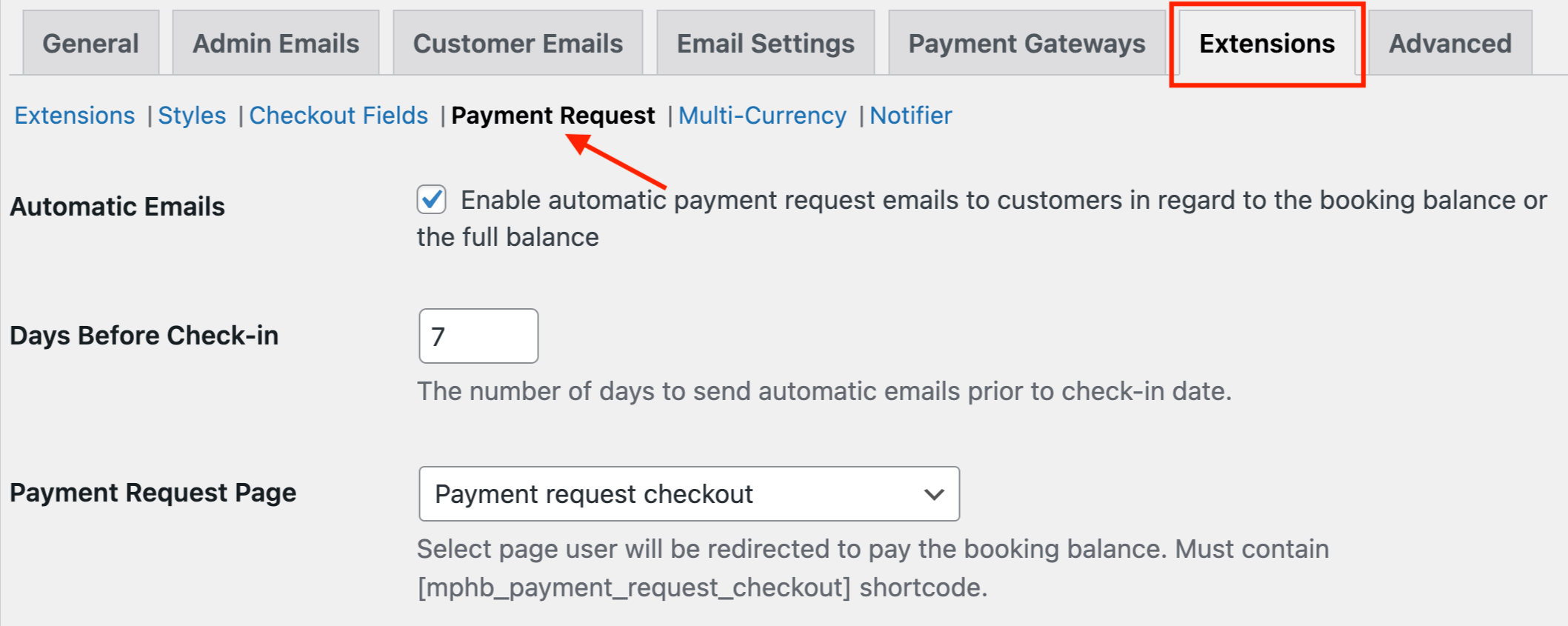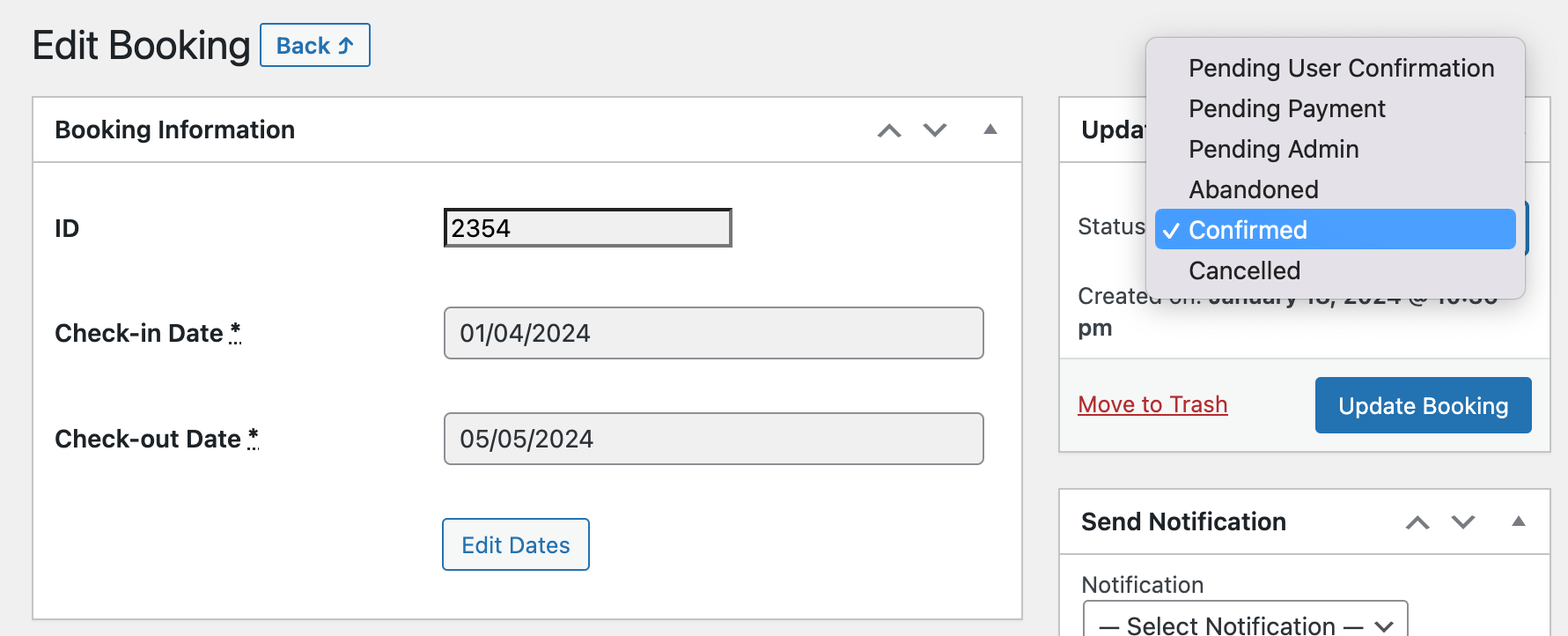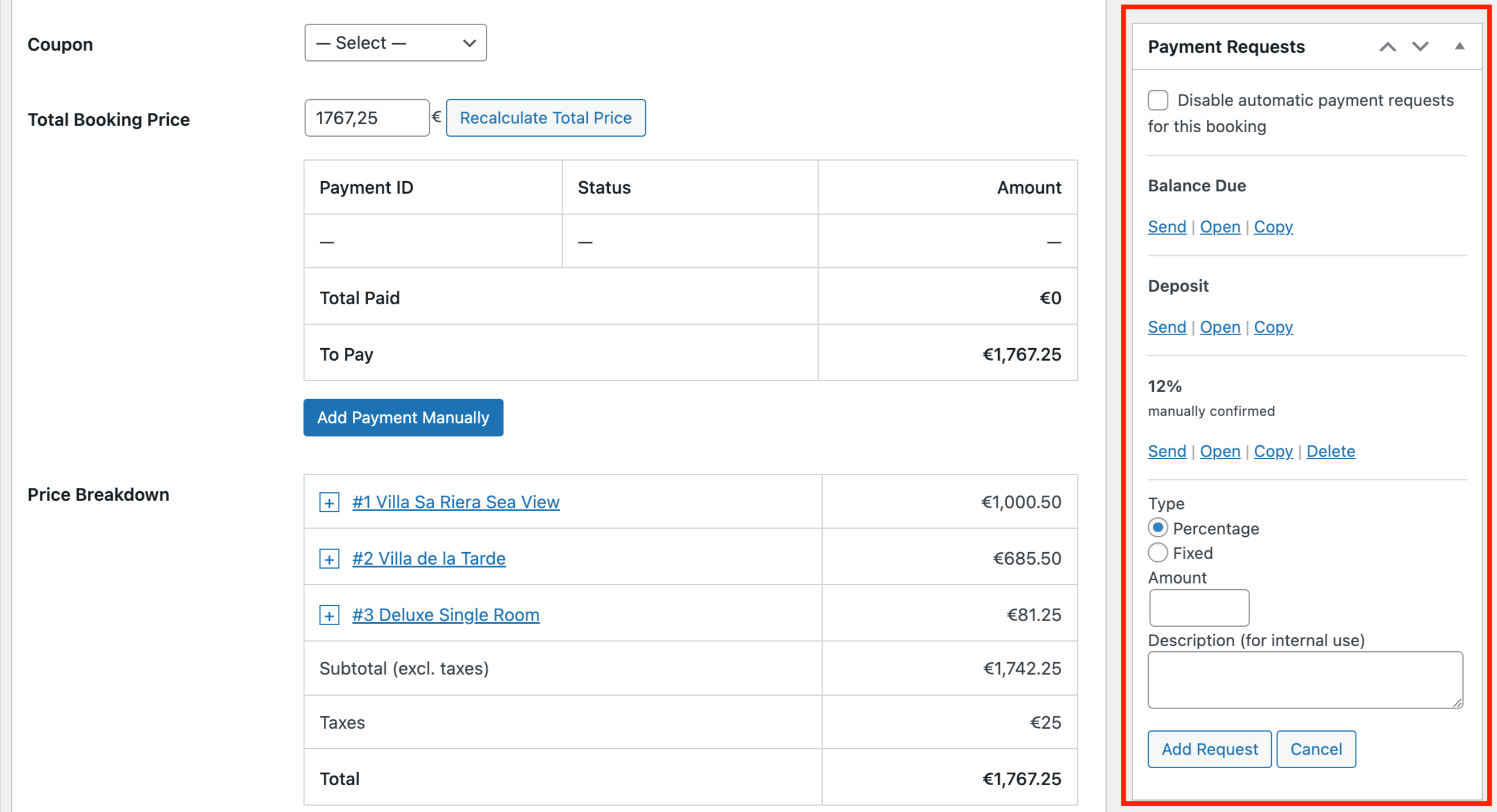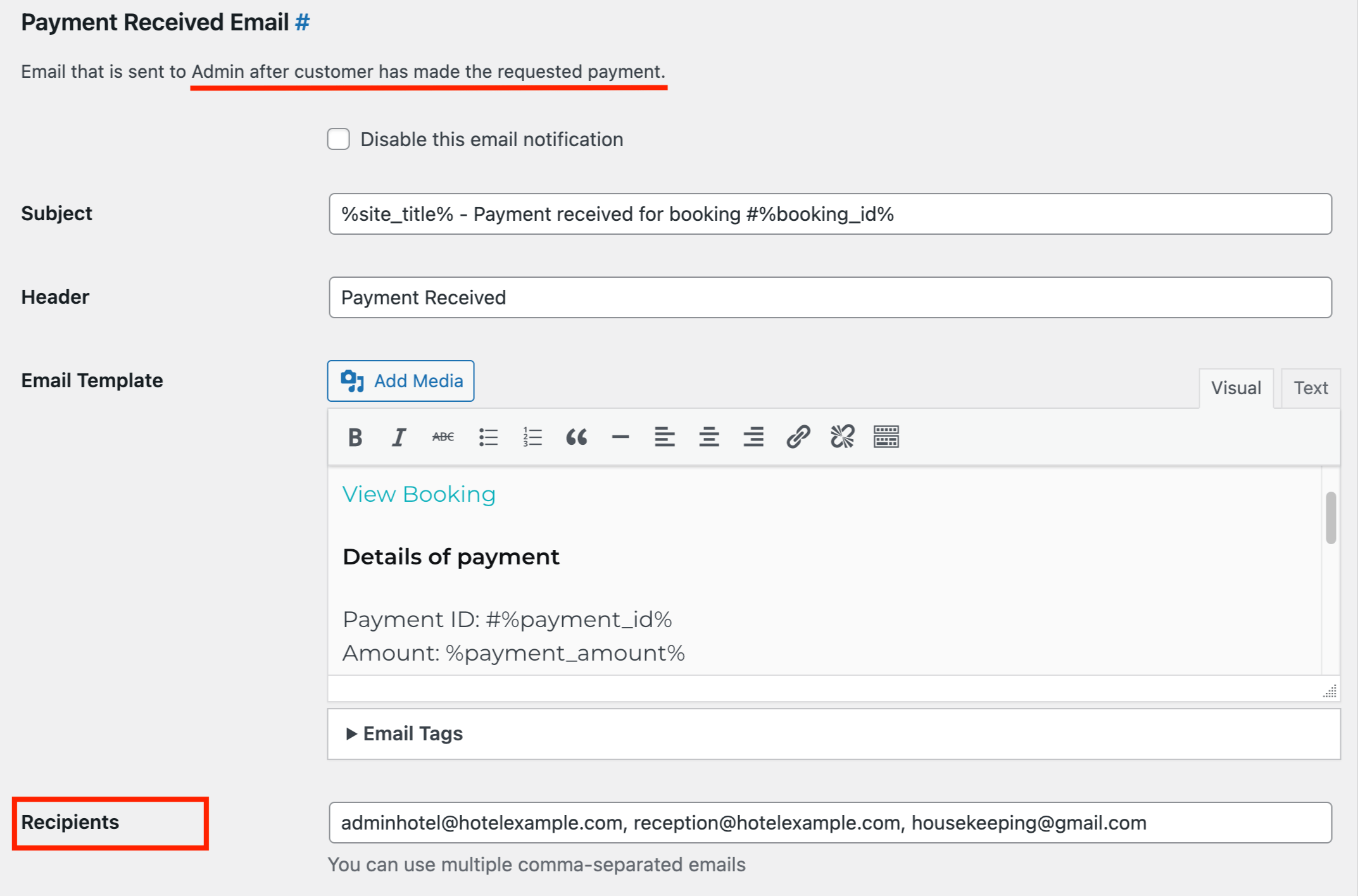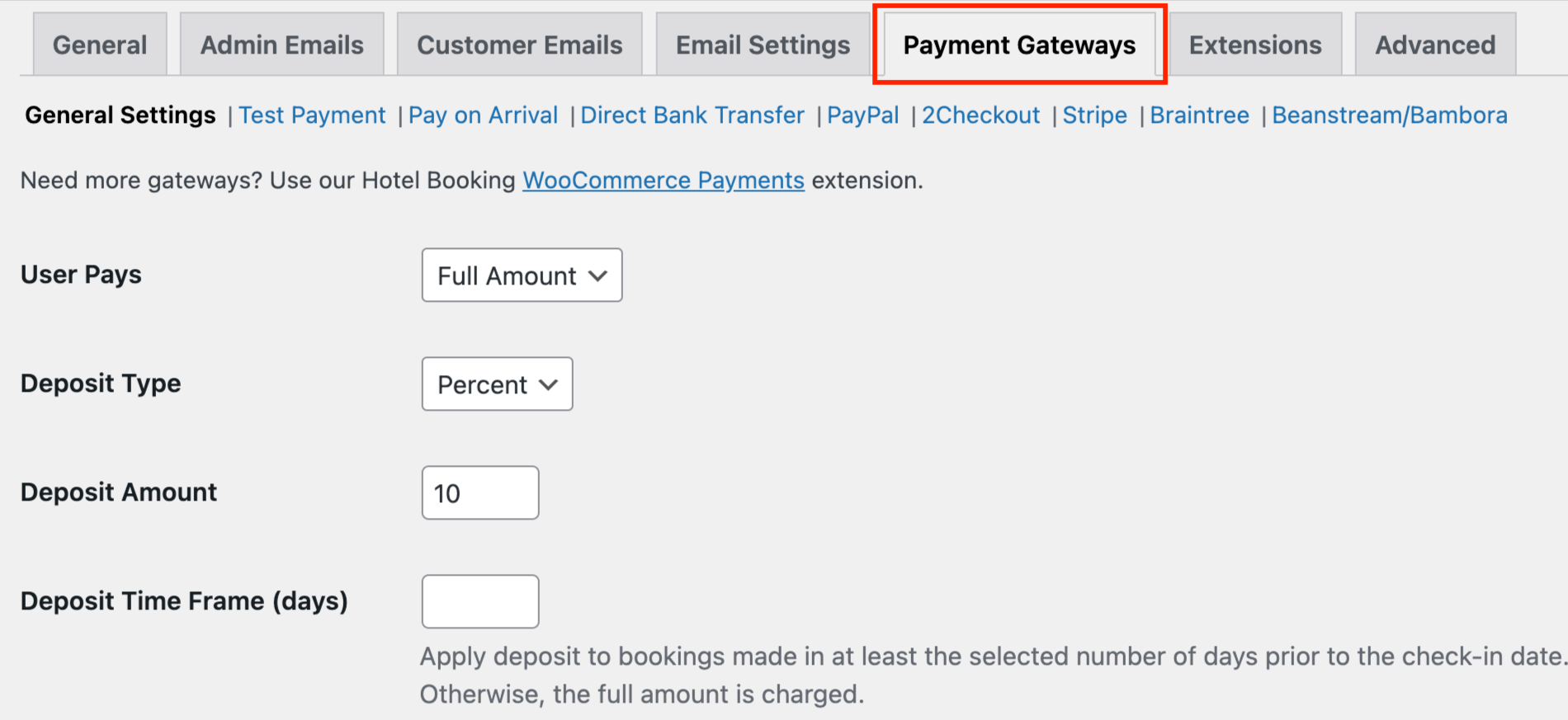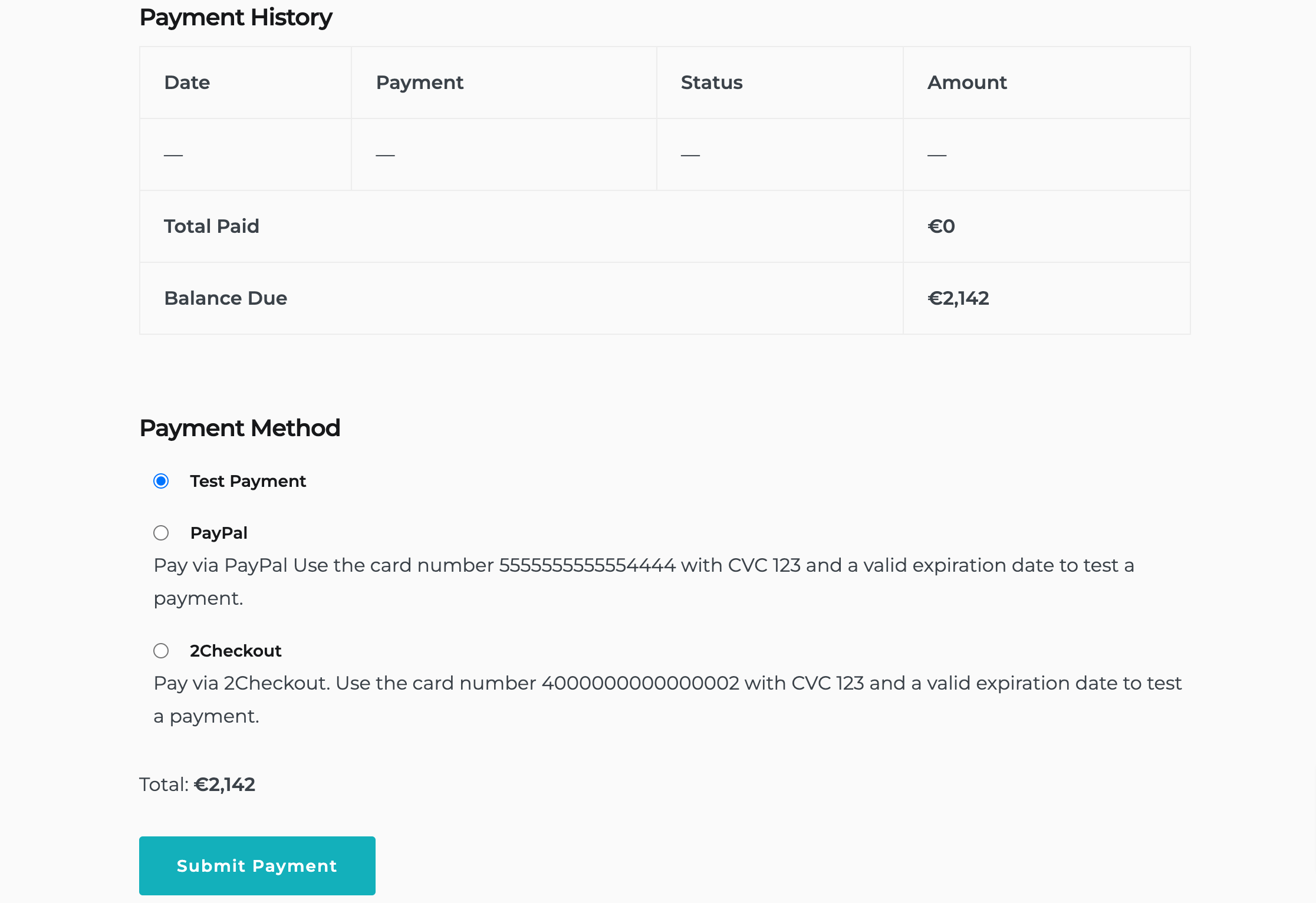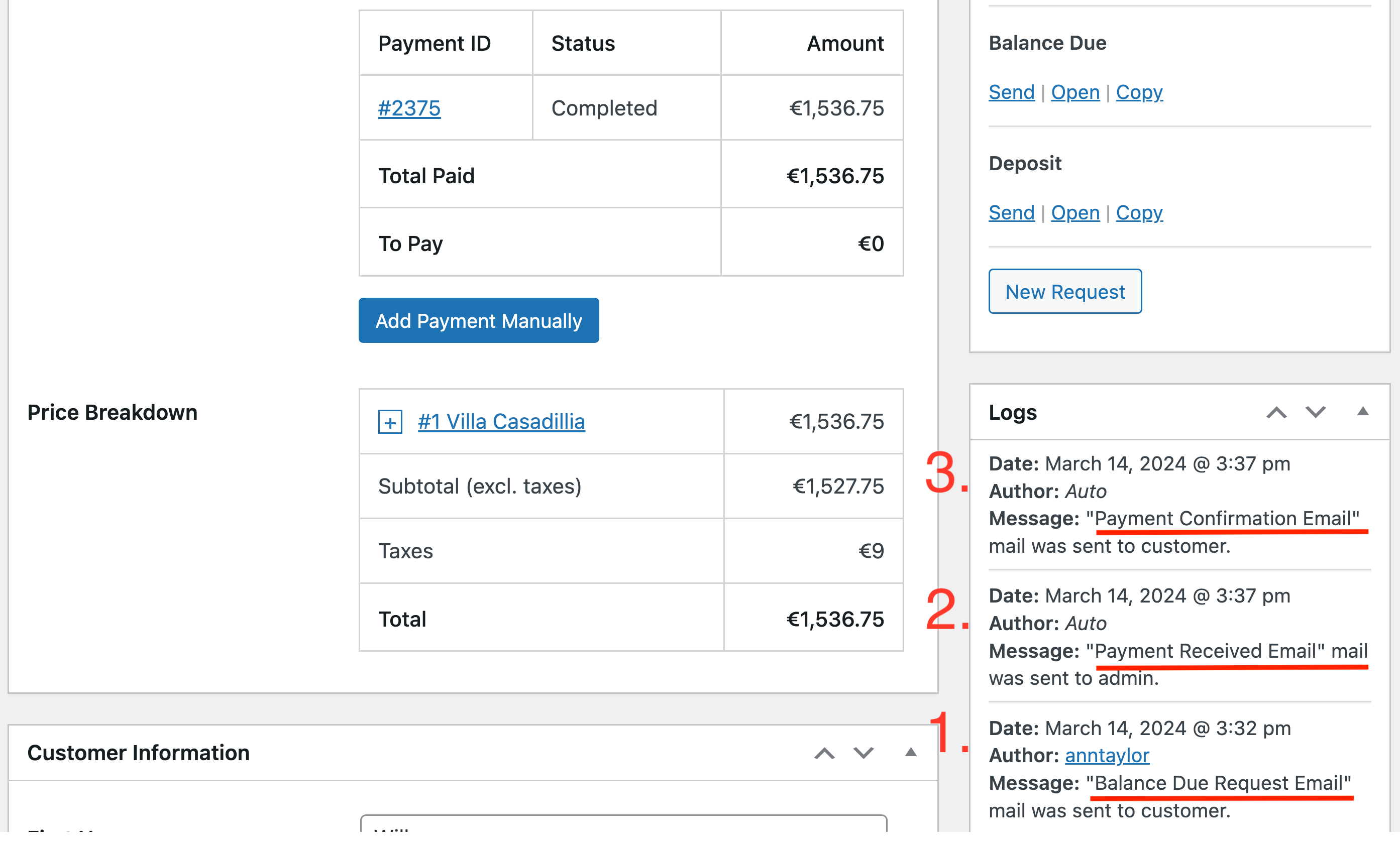Table of Contents
Installation and Setup
- Download a .zip archive with the Hotel Booking Payment Request add-on files.
- Install the plugin from your WordPress Dashboard via Plugins → Add New → Upload Plugin → Browse → Install Now.
- Activate the plugin (Note: this add-on requires Hotel Booking plugin 3.0.3 or greater).
- Go to Accommodation → Settings → Extensions tab → Payment Request → scroll down to License to input your license key and save changes.
- Once the plugin is activated you will see a notification at the top of your admin area offering to install the Payment Request page automatically. Click Install Now. This page can be created manually, too: publish a separate page with
[mphb_payment_request_checkout]in its content.
General Settings
Once you’ve installed and activated the plugin, go to Accommodation → Settings → Extensions tab → Payment Request tab.
Scheduled Payment Reminders
Important! The Payment Request addon won’t send automated emails to the email addresses assigned to existing bookings placed before you activated the addon. This is made to protect your past guests from receiving outdated emails. However, you can still send those reminders manually by clicking on the “Send” button for individual bookings.
To automate scheduled balance payment emails, configure the following settings:
- Tick “Enable automatic payment request emails” box for the system to send notifications automatically.
- In the “Days Before Check-in” drop-down, select in how many days prior to arrival the payment reminders must be sent.
- Select the “Payment Request Page”, which your guests will be redirected to to pay the balance.
Important: Automated payment request emails will be sent only in case the status of a booking is “Confirmed”.
Manual Payment Requests
Beyond automatic balance requests, you can send custom payment request links for any guest manually, anytime.
Find all types of requests you can set by navigating to All Bookings → Select a booking → Edit → Payment Request settings from the right.
It allows you to manually manage various booking requests.
Note: The ‘Balance due’ request is the only type available for both automatic and manual requests.
Request types:
- Balance Due: Allows you to manually ask the customer to pay the full remaining amount owed for their booking. Make sure to click “Disable automatic payment requests for this booking” If you’ve also set up auto-requests via the add-on settings.
- Deposit: Allows you to ask the customer to pay the partial cost of their booking based on your deposit settings (Accommodation → Settings → Payment Gateways → Deposit type and Deposit amount, ignoring the ‘User pays’ setting).
- Custom Request: Lets you manually create a payment request for a specific percentage or fixed amount of the total booking cost, and then send the customer a link to make the payment. Add new requests by clicking on the ‘New Request’ button. You can create and delete any number of requests of this type.
Action buttons:
- Send: Automatically sends an email to the customer requesting payment.
- Open: Displays a webpage on your site with booking details and checkout exactly as the customer would see it when accessing the payment request link.
- Copy: Copies a direct payment request link for you to share with the customer through other communication channels.
You are free to send payment requests anytime, as many times as needed.
Email Templates
Accommodation → Settings → Extensions tab → Payment Request → email templates.
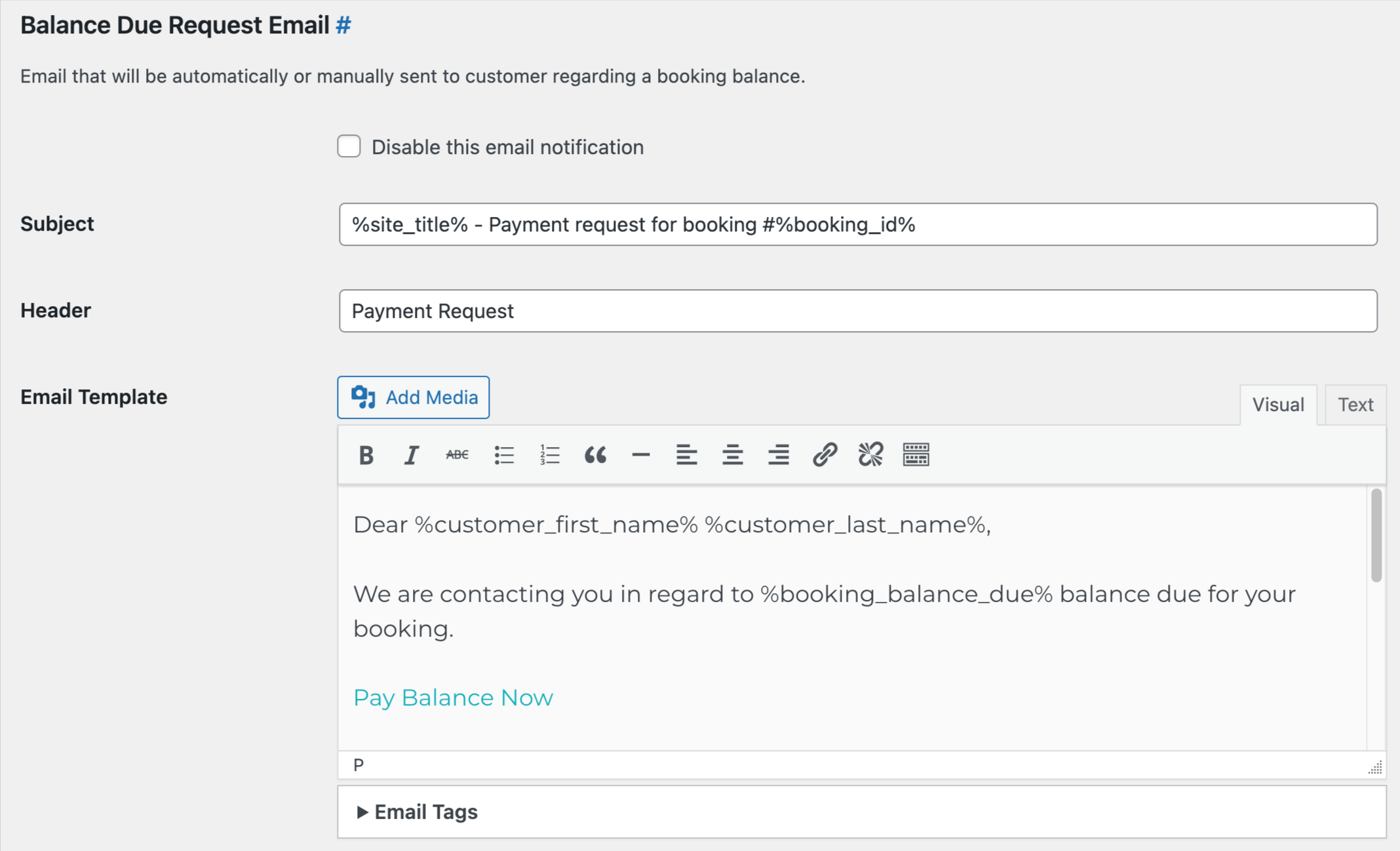
There are customer email templates for every type of payment request that use different focus tags for dynamically generating payment amounts:
- Balance Due Request Email uses the
%booking_balance_due%tag that generates the balance due amount. - Deposit Request Email uses the
%booking_deposit_amount%tag that generates the deposit cost for the particular booking. - Payment Request Email uses the
%booking_requested_amount%tag that generates the amount to be paid based on the custom settings for the chosen booking.
Using system macros, you can customize emails for your guests and optionally enable admin notification emails. Simply copy and paste the needed macros in the %check_in_date% format along with your custom email texts.
If you include a cancelation link into the email template and a guest confirms cancellation via email, the status of their booking is changed to “Cancelled”, automatically disabling payment request reminders for this booking.
As for admin emails, find the “Recipients” field to add multiple hotel or property staff email addresses (separate them by comma) that need to receive notifications.
Enable Website Payments
To enable website payments for guests who use payment request links, you need to enable preferable payment gateways via Accommodation → Settings → Payment Gateways tab.
Here you can turn on all default payment gateways available according to your core Hotel Booking plugin version and optionally hook up more gateways via premium WooCommerce Payments extension.
No matter the booking confirmation mode you have enabled via Accommodation → Settings → Booking Confirmation → Confirmation mode, the payment gateways will be displayed on the checkout page, generated for the Payment Request links only.
Payment History and Logs
Using “Logs” in the Edit booking menu, you can track all the requests sent and emails triggered. Once the guest has paid for their booking, this information is documented in the Payment History and in the individual booking record.
Confirmation Modes Explained
Even if your booking confirmation mode is set to “By admin manually” or “By customer via email” (Accommodation → Settings → Booking Confirmation → Confirmation mode), you can still enable website payments. To jump-start the automation, make sure that the status of a booking is Confirmed and the needed payment methods are enabled.
